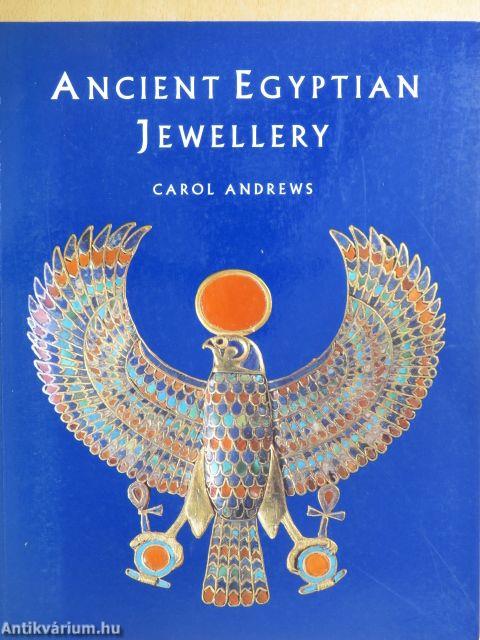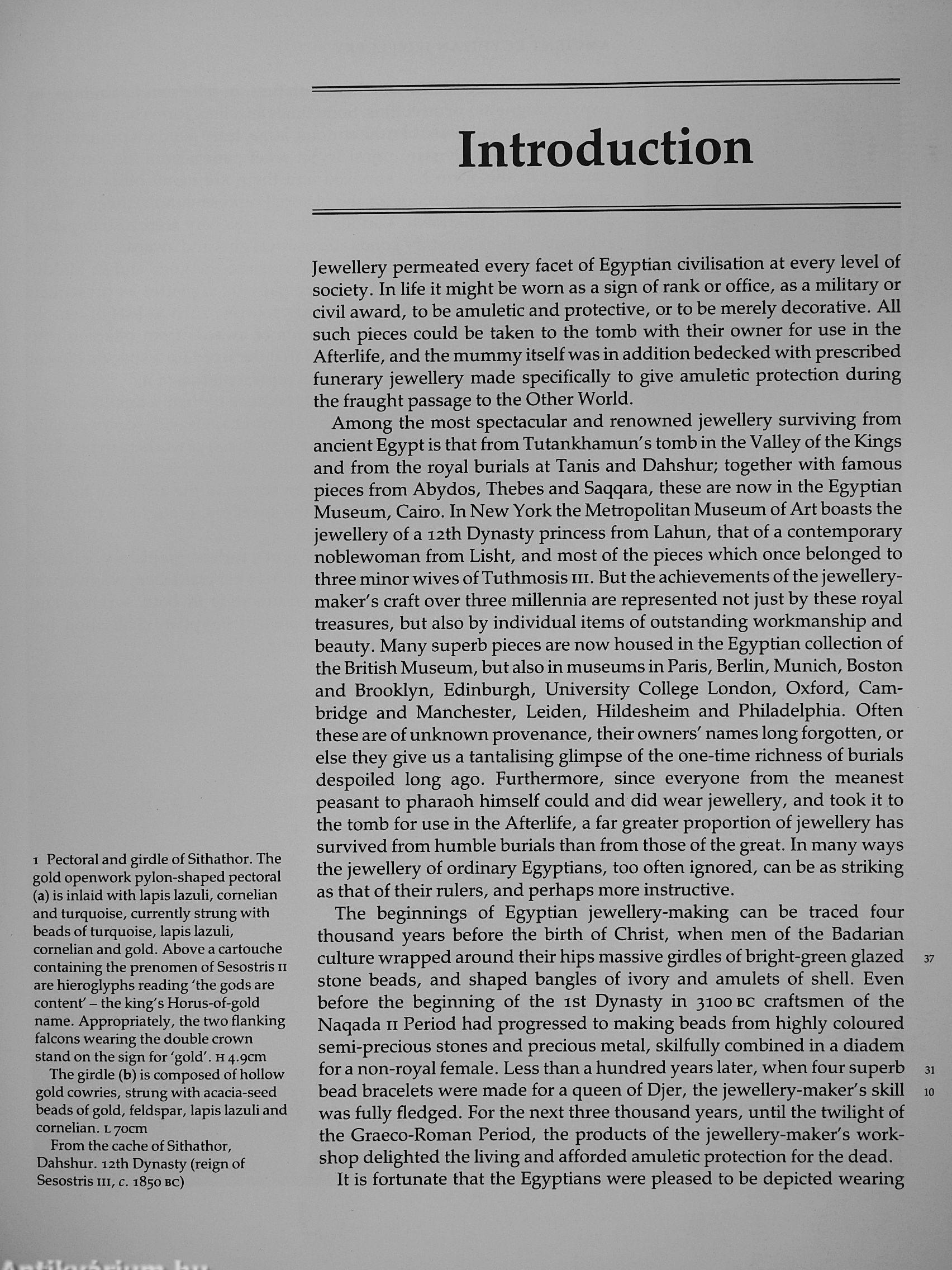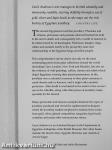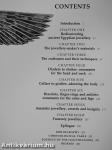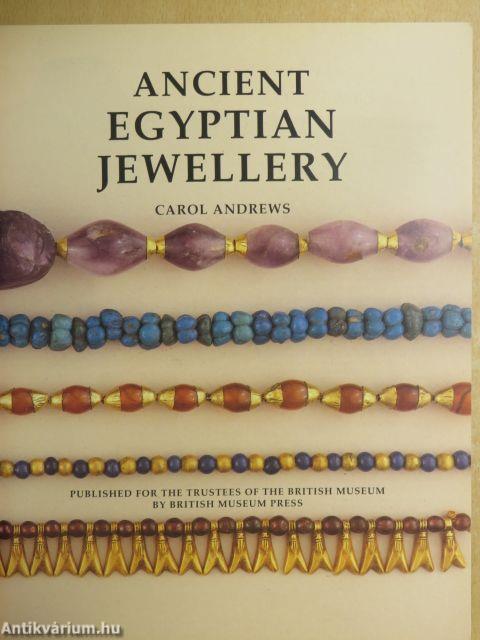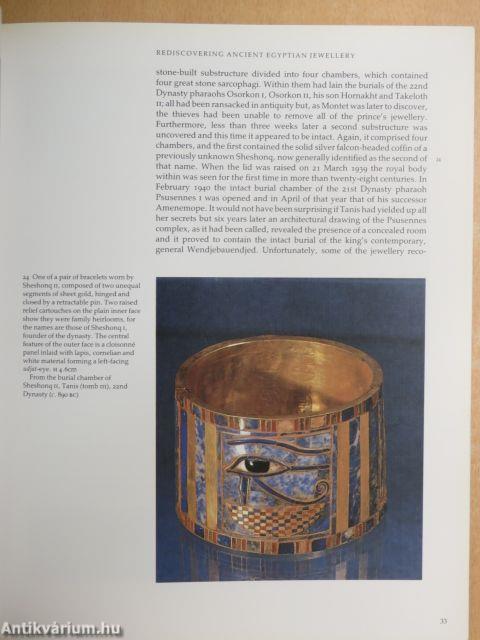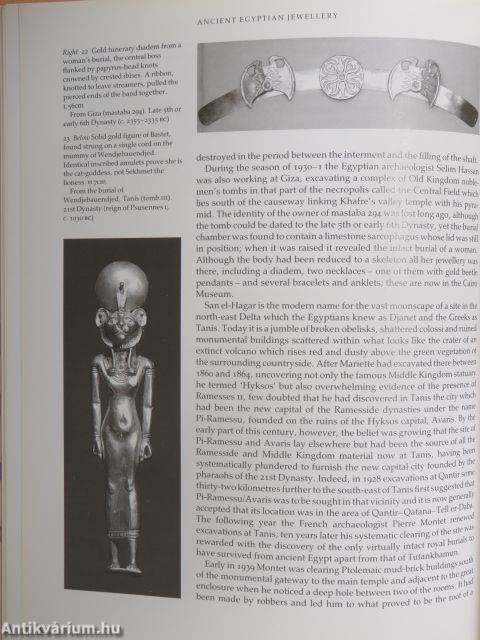1.067.335
kiadvánnyal nyújtjuk Magyarország legnagyobb antikvár könyv-kínálatát

VISSZA
A TETEJÉRE
JAVASLATOKÉszre-
vételek
Ancient Egyptian Jewellery
| Kiadó: | British Museum Press |
|---|---|
| Kiadás helye: | London |
| Kiadás éve: | |
| Kötés típusa: | Varrott papírkötés |
| Oldalszám: | 208 oldal |
| Sorozatcím: | |
| Kötetszám: | |
| Nyelv: | Angol |
| Méret: | 28 cm x 22 cm |
| ISBN: | 0-7141-1901-6 |
| Megjegyzés: | Színes és fekete-fehér fotókkal. |
naponta értesítjük a beérkező friss
kiadványokról
naponta értesítjük a beérkező friss
kiadványokról
Előszó
TovábbFülszöveg
Carol Andrews's text manages to be both scholarly and immensely readable, steering skilfully through a sea of gold, silver and lapis lazuli as she maps out the rich history of Egyptian jewellery. country life
The ancient Egyptians loved fine jewellery. Pharaohs and artisans, princesses and peasants adorned themselves both in life and in death, and consequently left a wealth of material to be rediscovered by archaeologists. Necklaces, bangles, rings, collars and amulets testify to the prosperity, taste and craftsmanship of the Egyptian kings and their people.
This comprehensive survey draws not only on the most outstanding pieces from great collections around the world (including Cairo, London, New York and Munich), but also on the evidence of wall-paintings, coffins, statues and reliefs which depict Egyptians wearing their prized possessions. In life, jewellery was a colourful accessory to their plain costumes; it could denote rank or honours, and it might offer amuletic... Tovább
Fülszöveg
Carol Andrews's text manages to be both scholarly and immensely readable, steering skilfully through a sea of gold, silver and lapis lazuli as she maps out the rich history of Egyptian jewellery. country life
The ancient Egyptians loved fine jewellery. Pharaohs and artisans, princesses and peasants adorned themselves both in life and in death, and consequently left a wealth of material to be rediscovered by archaeologists. Necklaces, bangles, rings, collars and amulets testify to the prosperity, taste and craftsmanship of the Egyptian kings and their people.
This comprehensive survey draws not only on the most outstanding pieces from great collections around the world (including Cairo, London, New York and Munich), but also on the evidence of wall-paintings, coffins, statues and reliefs which depict Egyptians wearing their prized possessions. In life, jewellery was a colourful accessory to their plain costumes; it could denote rank or honours, and it might offer amuletic protection. After death it was buried in the tomb for the owner's use in the Afterlife, along with other pieces of jewellery made specially for the funeral.
Many spectacular and famous examples illustrate the types of jewellery produced and reveal the sophisticated techniques which the jewellery-makers employed to fashion their works from gold, silver, glazed composition, turquoise, lapis lazuli, cornelian and many other semi-precious stones.
Carol Andrews is an Assistant Keeper in the Department of Egyptian Antiquities at the British Museum. Her other books include The Rosetta Stone, Egyptian Mummies and Amulets of Ancient Egypt.
With 140 colour and 46 black and white illustrations Vissza
Témakörök
- Idegennyelv > Idegennyelvű könyvek > Angol > Művészetek > Iparművészet
- Idegennyelv > Idegennyelvű könyvek > Angol > Művészetek > Művészettörténet, általános
- Művészetek > Művészettörténet általános > Idegen nyelv > Angol
- Művészetek > Művészettörténet általános > Korszakok, stílusok > Ókor > Egyiptom
- Művészetek > Iparművészet > Összefoglalók, tanulmányok > Külföldi
- Művészetek > Iparművészet > Története > Külföldi
- Művészetek > Iparművészet > Idegen nyelv > Angol
- Művészetek > Iparművészet > Fém-, ötvösművészet > Ékszerek
Carol Andrews
Carol Andrews műveinek az Antikvarium.hu-n kapható vagy előjegyezhető listáját itt tekintheti meg: Carol Andrews könyvek, művekMegvásárolható példányok
Nincs megvásárolható példány
A könyv összes megrendelhető példánya elfogyott. Ha kívánja, előjegyezheti a könyvet, és amint a könyv egy újabb példánya elérhető lesz, értesítjük.



